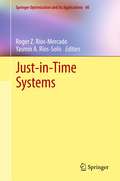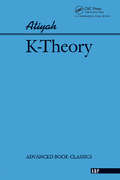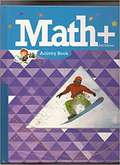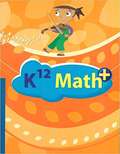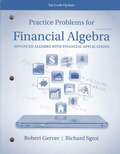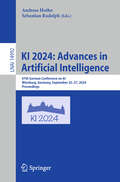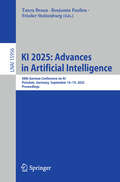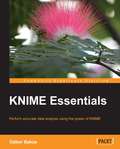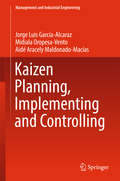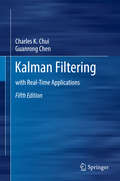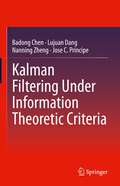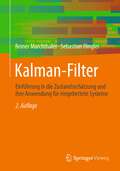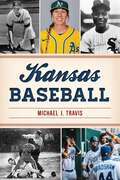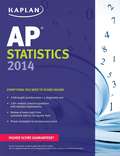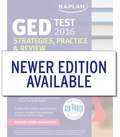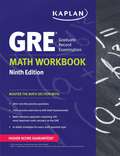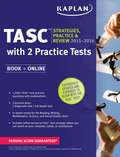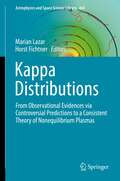- Table View
- List View
Just-in-Time Systems
by Yasmín A. Ríos-Solís Roger RiosWhether different types of costs are to be reduced, benefits to be maximized or scarce resources to be managed, scheduling theory provides intelligent methods for practitioners and scientists. The just-in-time (JIT) production philosophy has enriched the classical scheduling theory with models that consider characteristics such as inventory costs, set-up times, lot sizing, or maintenance. This edited volume considers the specifics of just-in-time systems. It provides knowledge and insights on recent advances in scheduling theory where just-in-time aspects are considered. Contributions on models, theory, algorithms, and applications, that bring the theory up-to-date on the state-of-the-art of JIT systems are presented. Professionals, researchers and graduate students will find this book useful.
Justice over the Course of Life: Biographies in a Society of Long Lives (Schriften zu Gesundheit und Gesellschaft - Studies on Health and Society #1)
by Christiane Woopen Björn Schmitz-LuhnIn this interdisciplinary book, experts from philosophy, medicine, law, psychology, economics, and social sciences address questions and develop solutions for a well-designed society of long life. Young as well as old people have to actively shape more and more of their life span. At the same time, aging becomes more multifaceted: the individual view on one’s own life course is changing, and the needs and demands for a fulfilled life are diversifying. The implications affect all spheres of life – from education and workplace to health care and the culture of interaction. They require content-related and structural adjustments for a diverse society of longevity in which multiple generations live alongside each other. But how can change be managed responsibly, how can individual and collective responsibility be distributed appropriately, and how can a sustainable and fair social future be ensured?
Juvenile Delinquency in Europe and Beyond
by Josine Junger-Tas Martin Killias Ineke Haen Marshall Beata Gruszczynska Majone Steketee Dirk EnzmannJuvenile Delinquency in Europe and Beyond: Results of the Second International Self-Report Delinquency Study presents the status of juvenile crime and delinquency and its backgrounds in many of the European Union member states as well as in the United States, Canada, Venezuela and Surinam. The book includes information on key issues in juvenile delinquency such as victimization of young people, alcohol and drug use and its relation to juvenile crime, involvement in youth gangs, immigration, family and school and neighborhood situations. It provides insight into different views on what can be considered juvenile crime; what acts are subsumed in its definition and when we can speak about structural delinquent behavior. These insights are based on self-reported information systematically and simultaneously collected from about 70,000 12-15 year old youths in 28 countries. Until recently, the self-report methodology has not been applied on such a large scale in an international context. The results of this survey provide new and unexpected data about those young people who structurally commit criminal acts, as well as on the frequency of the behavior and the conditions that have an impact on offending. The wealth of descriptions and insights in delinquency of all these countries will be of great interest to scholars, students and practitioners because of the special character of the publication; it is a book of reference to everyone interested in the backgrounds of juvenile delinquency.
K-theory
by Michael AtiyahThese notes are based on the course of lectures I gave at Harvard in the fall of 1964. They constitute a self-contained account of vector bundles and K-theory assuming only the rudiments of point-set topology and linear algebra. One of the features of the treatment is that no use is made of ordinary homology or cohomology theory. In fact, rational cohomology is defined in terms of K-theory.The theory is taken as far as the solution of the Hopf invariant problem and a start is mode on the J-homomorphism. In addition to the lecture notes proper, two papers of mine published since 1964 have been reproduced at the end. The first, dealing with operations, is a natural supplement to the material in Chapter III. It provides an alternative approach to operations which is less slick but more fundamental than the Grothendieck method of Chapter III, and it relates operations and filtration. Actually, the lectures deal with compact spaces, not cell-complexes, and so the skeleton-filtration does not figure in the notes. The second paper provides a new approach to K-theory and so fills an obvious gap in the lecture notes.
K12 Student Workbook For Financial Algebra: Advanced Algebra With Financial Applications Tax Code Update, 2nd Student Edition
by Richard J. Sgroi Robert GerverK12 Student Workbook for Financial Algebra: Advanced Algebra with Financial Applications Tax Code Update, 2nd Student Edition 2nd Edition
KI 2019: 42nd German Conference on AI, Kassel, Germany, September 23–26, 2019, Proceedings (Lecture Notes in Computer Science #11793)
by Heiner Stuckenschmidt Christoph BenzmüllerThis book constitutes the refereed proceedings of the 42nd German Conference on Artificial Intelligence, KI 2019, held in Kassel, Germany, in September 2019. The 16 full and 10 short papers presented together with 3 extended abstracts in this volume were carefully reviewed and selected from 82 submissions. KI 2019 has a special focus theme on "AI methods for Argumentation" and especially invited contributions that use methods from all areas of AI to understand, formalize or generate argument structures in natural language.
KI 2024: 47th German Conference on AI, Würzburg, Germany, September 25–27, 2024, Proceedings (Lecture Notes in Computer Science #14992)
by Andreas Hotho Sebastian RudolphThis book constitutes the proceedings of the 47th German Conference on AI, KI 2024, which was held in Würzburg, Germany, during September 25–27, 2024. The 19 full papers, 7 short papers and 5 other papers presented in this book were carefully reviewed and selected from 63 submissions. KI is one of the major European AI conferences and traditionally brings together academic and industrial researchers from all areas of AI, providing an ideal place for exchanging news and research results on theory and applications. The papers have been categorized into the following sections: full technical papers; technical communications; extended abstracts of papers from other AI conferences.
KI 2025: 48th German Conference on AI, Potsdam, Germany, September 16–19, 2025, Proceedings (Lecture Notes in Computer Science #15956)
by Frieder Stolzenburg Tanya Braun Benjamin PaaßenThis book constitutes the proceedings of the 48th German Conference on Artificial Intelligence (Künstliche Intelligenz), KI 2025, which was held in Potsdam, Germany, during September 16–19, 2025. The 15 full papers, 8 short papers and 5 extended abstracts presented in these proceedings were carefully reviewed and selected from 74 submissions. They focus on new research results on theory and applications in AI. The papers were categorized in the following sections: Full Technical Papers; Technical Communications; Extended Abstracts.
KNIME Essentials
by Gabor BakosKNIME Essentials is a practical guide aimed at getting the results you want, as quickly as possible."Knime Essentials" is written for data analysts looking to quickly get up to speed using the market leader in data processing tools, KNIME. No knowledge of KNIME is required, but we will assume that you have some background in data processing.
Kafka Troubleshooting in Production: Stabilizing Kafka Clusters in the Cloud and On-premises
by Elad EldorThis book provides Kafka administrators, site reliability engineers, and DataOps and DevOps practitioners with a list of real production issues that can occur in Kafka clusters and how to solve them. The production issues covered are assembled into a comprehensive troubleshooting guide for those engineers who are responsible for the stability and performance of Kafka clusters in production, whether those clusters are deployed in the cloud or on-premises. This book teaches you how to detect and troubleshoot the issues, and eventually how to prevent them.Kafka stability is hard to achieve, especially in high throughput environments, and the purpose of this book is not only to make troubleshooting easier, but also to prevent production issues from occurring in the first place. The guidance in this book is drawn from the author's years of experience in helping clients and internal customers diagnose and resolve knotty production problems and stabilize their Kafka environments. The book is organized into recipe-style troubleshooting checklists that field engineers can easily follow when under pressure to fix an unstable cluster. This is the book you will want by your side when the stakes are high, and your job is on the line. What You Will LearnMonitor and resolve production issues in your Kafka clustersProvision Kafka clusters with the lowest costs and still handle the required loadsPerform root cause analyses of issues affecting your Kafka clustersKnow the ways in which your Kafka cluster can affect its consumers and producersPrevent or minimize data loss and delays in data streamingForestall production issues through an understanding of common failure pointsCreate checklists for troubleshooting your Kafka clusters when problems occurWho This Book Is ForSite reliability engineers tasked with maintaining stability of Kafka clusters, Kafka administrators who troubleshoot production issues around Kafka, DevOps and DataOps experts who are involved with provisioning Kafka (whether on-premises or in the cloud), developers of Kafka consumers and producers who wish to learn more about Kafka
Kaizen Planning, Implementing and Controlling
by Jorge Luis García-Alcaraz Aidé Aracely Maldonado-Macías Midiala Oropesa-VentoThis book reports a literature review on kaizen, its industrial applications, critical success factors, benefits gained, journals that publish about it, main authors (research groups) and universities. Kaizen is treated in this book in three stages: planning, implementation and control. The authors provide a questionnaire designed with activities in every stage, highlighting the benefits gained in each stage. The study has been applied to more than 400 managers and leaders in continuous improvement in Mexican maquiladoras. A univariate analysis is provided to the activities in every stage. Moreover, structural equation models associating those activities with the benefits gained are presented for a statistical validation. Such a relationship between activities and benefits helps managers to identify the most important factor affecting their benefits and financial income.
Kaleidoscopes, Hubcaps, and Mirrors, Symmetry and Transformations
by Glenda Lappan James T. Fey William M. FitzgeraldNIMAC-sourced textbook
Kalman Filtering
by Guanrong Chen Charles K. ChuiKalman filtering algorithm gives optimal (linear, unbiased and minimum error-variance) estimates of the unknown state vectors of a linear dynamic-observation system, under the regular conditions such as perfect data information; complete noise statistics; exact linear modeling; ideal well-conditioned matrices in computation and strictly centralized filtering. In practice, however, one or more of the aforementioned conditions may not be satisfied, so that the standard Kalman filtering algorithm cannot be directly used, and hence OC approximate Kalman filteringOCO becomes necessary. In the last decade, a great deal of attention has been focused on modifying and/or extending the standard Kalman filtering technique to handle such irregular cases. It has been realized that approximate Kalman filtering is even more important and useful in applications. This book is a collection of several tutorial and survey articles summarizing recent contributions to the field, along the line of approximate Kalman filtering with emphasis on both its theoretical and practical aspects. "
Kalman Filtering Under Information Theoretic Criteria
by Jose C. Principe Nanning Zheng Badong Chen Lujuan DangThis book provides several efficient Kalman filters (linear or nonlinear) under information theoretic criteria. They achieve excellent performance in complicated non-Gaussian noises with low computation complexity and have great practical application potential. The book combines all these perspectives and results in a single resource for students and practitioners in relevant application fields. Each chapter starts with a brief review of fundamentals, presents the material focused on the most important properties and evaluates comparatively the models discussing free parameters and their effect on the results. Proofs are provided at the end of each chapter. The book is geared to senior undergraduates with a basic understanding of linear algebra, signal processing and statistics, as well as graduate students or practitioners with experience in Kalman filtering.
Kalman-Filter: Einführung in die Zustandsschätzung und ihre Anwendung für eingebettete Systeme
by Reiner Marchthaler Sebastian DinglerDieses Lehrbuch befasst sich leicht verständlich mit der Theorie der Kalman-Filterung. Die Autoren geben damit eine Einführung in Kalman-Filter und deren Anwendung für eingebettete Systeme. Zusätzlich wird anhand konkreter Praxisbeispiele der Kalman-Filterentwurf demonstriert – Teilschritte werden im Buch ausführlich erläutert.Kalman-Filter sind die erste Wahl, um Störsignale auf den Sensorsignalen zu eliminieren. Dies ist von besonderer Bedeutung, da viele technische Systeme ihre prozessrelevanten Informationen über Sensoren gewinnen. Jeder Messwert eines Sensors weißt jedoch aufgrund verschiedener Ursachen einen Messfehler auf. Würde ein System nur auf Basis dieser ungenauen Sensorinformationen arbeiten, so wären viele Anwendungen, wie zum Beispiel ein Navigationssystem oder autonome arbeitende Systeme, nicht möglich.Das Buch ist geeignet für interessierte Bachelor- und Master-Studierende der Fachrichtungen Informatik, Maschinenbau, Elektrotechnik undMechatronik. Ebenso ist das Buch eine Hilfe für Ingenieure und Wissenschaftler, die ein Kalman-Filter z. B. für die Datenfusion oder die Schätzung unbekannter Größen in Echtzeitanwendungen einsetzen möchten.
Kanakku (Maths) 10th Standard - Tamilnadu Board
by Training State Council of Educational ResearchKanakku (Maths) Textbook for the 10th Standard Students, preparing for Tamil Nadu State Board Exam.
Kansas Baseball (Sports)
by Michael J. TravisBaseball has long been synonymous with Kansas. Go back to the late 1800s and the birth of Walter Johnson and George Sweatt, Humboldt kids who played baseball at the highest level but in different leagues due to racism. Learn about the sixteen-year-old signed by the Kansas City Athletics, who left the University of Kansas campus to play his first game at Municipal Stadium the next day. Read about pioneers in the game named Joyce, Katie and Alex, determined and talented women who are part of our national pastime. Author Michael Travis shares his love for the game, rounding the bases from its beginnings in Wichita with League 42 to the Major Leagues.
Kaplan AP Calculus AB & BC 2016
by Tamara Lefcourt Ruby James Sellers Lisa Korf Jeremy Van Horn Mike MunnThe only Advanced Placement test preparation guide that delivers 75 years of proven Kaplan experience and features exclusive strategies, practice, and review to help students ace the AP Calculus AB & BC exam! Students spend the school year preparing for the AP Calculus AB & BC test. Now it's time to reap the rewards: money-saving college credit, advanced placement, or an admissions edge. However, achieving a top score on the AP Calculus AB & BC exam requires more than knowing the material--students need to get comfortable with the test format itself, prepare for pitfalls, and arm themselves with foolproof strategies. That's where the Kaplan plan has the clear advantage. Kaplan's AP Calculus AB & BC 2016 offers many essential and unique features to help improve test scores, including: * Eight full-length practice tests, including two diagnostic tests to target areas for score improvement * Detailed answer explanations * Expert video tutorials * Tips and strategies for scoring higher from expert AP Calculus AB & BC teachers and students who got a perfect 5 on the exam * Targeted review of the most up-to-date content, including any information about test changes and key information that is specific to the AP Calculus AB & BC exam Kaplan's AP Calculus AB & BC 2016 authors Tamara Lefcourt Ruby, James Sellers, Lisa Korf, Jeremy Van Horn, and Mike Munn have many years of experience teaching calculus as well as other math courses. Their expertise has helped make this and other books the best that Kaplan has to offer in AP test prep. Kaplan's AP Calculus AB & BC 2016 provides students with everything they need to improve their scores--guaranteed. Kaplan's Higher Score guarantee provides security that no other test preparation guide on the market can match. Kaplan has helped more than three million students to prepare for standardized tests. We invest more than $4.5 million annually in research and support for our products. We know that our test-taking techniques and strategies work and our materials are completely up-to-date. Kaplan's AP Calculus AB & BC 2016 is the must-have preparation tool for every student looking to do better on the AP Calculus AB & BC test!
Kaplan AP Statistics 2014
by Bruce Simmons Mary Jean Bland Barbara WojciechowskiThe book helps to prepare for the AP Statistics exam by providing Kaplan's test-taking strategies, a targeted review that highlights important concepts on the exam, and practice tests.
Kaplan GED® Test 2016: Strategies, Practice, And Review With 2 Practice Tests
by Caren SlykeAlways study with the most up-to-date prep! Look for GED Test 2017 Strategies, Practice & Review with 2 Practice Tests
Kaplan GRE® Math Workbook (Ninth Edition)
by KaplanHundreds of realistic practice questions and exercises to prepare you for the Math portion of the GRE. Kaplan's Math Workbook for the GRE, 9th Edition, comprehensively addresses the math section of the GRE Revised General Test. This workbook is a highly effective way to prepare for the math section of the GRE Revised General Test. Kaplan's Math Workbook for the GRE, 9th Edition includes: * 6 full-length Quantitative Reasoning practice sets * Diagnostic tool for even more targeted Quantitative practice * Review of crucial math skills and concepts (including arithmetic, algebra, data interpretation, geometry, and probability) * Key strategies for all Quantitative Reasoning question types on the revised GRE Kaplan is dedicated to helping our students score higher. We guarantee that students will raise their scores-or get their money back.
Kaplan TASC Strategies, Practice, and Review 2015-2016
by KaplanComprehensive content review, strategies, and practice for all sections of the TASC (Test Assessing Secondary Completion) from top test experts.
Kappa Distributions: From Observational Evidences via Controversial Predictions to a Consistent Theory of Nonequilibrium Plasmas (Astrophysics and Space Science Library #464)
by Marian Lazar Horst FichtnerThis book presents recent results on the modelling of space plasmas with Kappa distributions and their interpretation. Hot and dilute space plasmas most often do not reach thermal equilibrium, their dynamics being essentially conditioned by the kinetic effects of plasma particles, i.e., electrons, protons, and heavier ions. Deviations from thermal equilibrium shown by these plasma particles are often described by Kappa distributions. Although well-known, these distributions are still controversial in achieving a statistical characterization and a physical interpretation of non-equilibrium plasmas.The results of the Kappa modelling presented here mark a significant progress with respect to all these aspects and open perspectives to understanding the high-resolution data collected by the new generation of telescopes and spacecraft missions.The book is directed to the large community of plasma astrophysics, including graduate students and specialists from associated disciplines, given the palette of the proposed topics reaching from applications to the solar atmosphere and the solar wind, via linear and quasilinear modelling of multi-species plasmas and waves within, to the fundamental physics of nonequilibrium plasmas.
